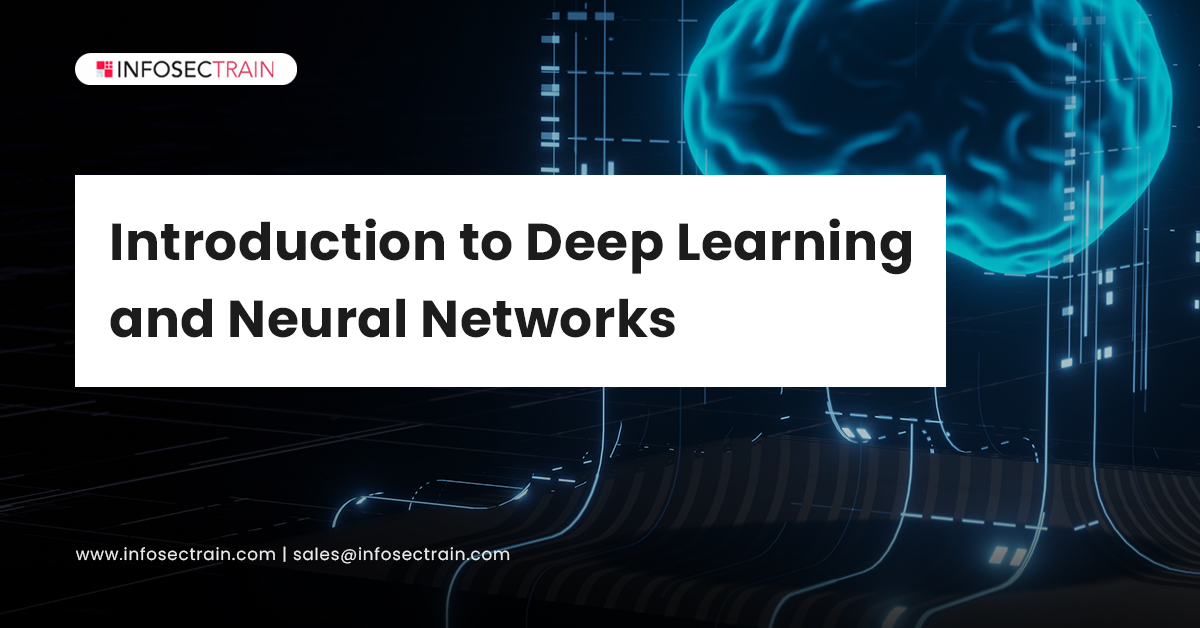Introduction to Deep Learning and Neural Networks
Deep Learning and Neural Networks are the branches of Machine learning and Artificial Intelligence used to mimic the human brain and help solve complex problems using structured as well as unstructured data. This comprehensive blog is curated with the basic concepts of Deep Learning and Neural networks.

What is meant by Deep Learning?
Deep Learning is a part of Machine Learning that helps map the input and the output using Mathematical functions. These functions are extracted from redundant data that enables the relation between input and output. Artificial Neural Networks (ANN) are used in Deep Learning to simulate the human brain, and in these neural networks, there are several layers, each layer has its own mathematical function, and we are passing our labeled data from these layers to get an appropriate Neural Network model (or Deep Learning Model) for our labeled data.
Deep learning algorithms can learn with human supervision for both structured and unstructured data. These methods are used in various sectors such as banking, healthcare, e-commerce, finance, etc.
How Deep Learning Works?
Deep learning works based on a Neural network that computes data using millions of neurons like the human brain. It consists of a machine learning model composed of various levels of representation, in which every level uses the data from the previous level to learn deeply. Each level relates to a different area of the cerebral cortex, and every level abstracts the data similar to the human brain.
Deep Learning requires enormous amounts of labeled data and high-performance GPUs with parallel architecture. It should enable the development team to minimize the training time for deep learning networks from weeks to hours when combined with cloud computing.
Applications of Deep Learning
Deep Learning has several applications in various sectors. They are as follows:
- Industrial Automation: Deep learning helps to enhance worker safety over heavy machinery by detecting people or objects at an unsafe distance from machines.
- Aerospace and Defense: Deep learning in Aerospace and Defense helps identify the location of objects from satellites and determines if troops are in a safe or unsafe zone.
- Automated Driving: Deep learning in Automotive helps detect objects such as traffic lights and signal lines. It is also used to recognize pedestrians, which aids in reducing accidents.
- Electronics: Deep learning is used in speech translation and automated hearing. For example, smart home appliances use voice recognition.
- Medical Research: Deep learning in Medical Research helps to identify cancer cells. UCLA researchers developed a high-dimensional data set to train a deep learning application to identify cancer cells reliably.
What is a Neural Network?
The neural network is a set of algorithms that attempts to identify underlying relationships in a dataset using a method that mimics how the human brain works. It refers to a system of neurons that can be artificial or organic in nature.
How Neural Network works
The Neural network process begins with input data which is further processed to provide the required output. It uses structured data to get the output. The perceptron, often known as a neuron, is a basic neural network component, and it learns and defines data using the supervised learning method.
This process comprises three layers:
- Input layer
- Hidden layer
- Output layer
The input layer receives the data numerically; then, the hidden layer constitutes the intermediary node that divides the layer into boundaries by executing computations. Finally, the output layer exhibits the desired output. This structure is known as a simple neural network, and layers of this network are connected by the nodes, further forming a network.
Types of Neural Networks
The different types of Neural Networks are as follows:
1. Convolution Neural Network (CNN): The Convolution Neural Network (CNN) is a variation of multi-layer perceptron which contains one or more convolution layers. It helps identify various image patterns and is used for image recognition.
2. Feedforward Neural Network: The Feedforward Neural Network is a basic neural network in which the flow control appears from the input layer to the output layer. It includes a single layer or one hidden layer. This network is used for facial recognition algorithms for computer vision.
3. Modular Neural Network (MNN): The Modular Neural Network combines multiple neural networks to make a huge neural network that works independently to achieve a task. This network is commonly used for breaking complex problems into small problems to solve them effectively.
4. Multi-layer Perceptron: The Multi-layer Perceptron includes three or more layers that are completely connected by every node and define the non-linear data. This network is used for speech recognition and other machine learning methods.
5. Radial Basis Function Neural Network: The Radial Basis Function Neural Network consists of one or more layers. The relative distance from one layer to the center is calculated and maintains the calculated distance with the other layer. It is used for power restoration systems.
6. Recurrent Neural Network (RNN): The Recurrent Neural Network (RNN) helps predict the output when a neuron’s output is given back as an input to the same node. This network is commonly used for chatbox and text-to-speech methods.
7. Sequence to sequence models: The sequence to sequence model combines two RNN networks: an encoder to process the input and a decoder to process the output. This network is used for text processing.
Applications of Neural Network
The neural network has significant application in various sectors. Some of them are as follows:
- Facial Recognition
- Aerospace and Defense
- Signature Verification and Handwriting Analysis
- Healthcare
- Weather Forecasting
- Stock Prediction
- Social Media
Deep Learning and Neural Networks have a great future scope and tremendous day-to-day applications. These methods are used to provide the best solutions for many complex problems in Natural language processing, Image recognition, Forecasting, and predictions.
Data Science with InfosecTrain
Data Science is a well-known emerging field of data research that can be seen as an umbrella of all data disciplines such as Data Mining, Artificial Intelligence, Machine Learning, Deep Learning, and Neural Networks. So the jobs in data science are rapidly growing in this era. Regardless of size, every organization looks for employees who can understand and analyze their data. So check out InfosecTrain for Data Science training.




 1800-843-7890 (India)
1800-843-7890 (India) 
